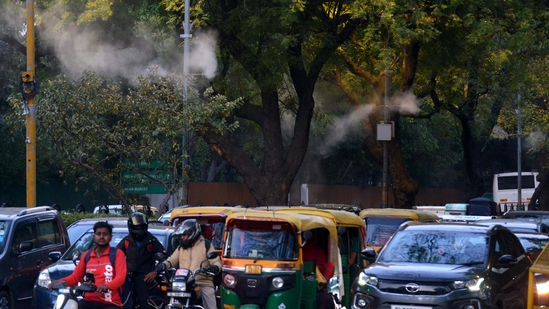A new report from the Comptroller and Auditor General (CAG) has uncovered problems with how Delhi is handling air pollution. It was presented in the assembly on Tuesday by Chief Minister Rekha Gupta.
The report focuses on “Vehicular Air Pollution in Delhi” and points out several issues that are making the city’s air quality worse. Key problems include:
1. About 1.08 lakh vehicles were given Pollution Under Control (PUC) certificates even though they were spewing dangerous amounts of carbon monoxide and harmful gases.
2. Many vehicles received their certificates at the same time, sometimes only a minute apart, which raises questions about the checking process.
3. The monitoring systems for air quality in Delhi don’t follow the rules set by the Central Pollution Control Board (CPCB). This means that the Air Quality Index (AQI) reported might not show the real pollution levels, making it hard for officials to take action.
4. From 2015 to 2020, nearly 4,000 diesel vehicles with high pollution levels were still allowed on the road because of faulty certifications.
5. The Delhi government only removed about 2.98 lakh out of 47.51 lakh old vehicles that needed to be taken off the road between 2018 and 2021.
6. 347 impounded vehicles weren’t destroyed by the deadline, and there isn’t enough space to store all the vehicles that need scrapping.
7. The transport department does not have enough staff or the right tools to check pollution levels effectively.
8. The government has failed to build two new bus terminals over 20 years after the Supreme Court asked for them.
The main reasons for Delhi’s bad air quality, according to the report, include vehicle emissions, industrial pollution, construction dust, and burning of crop leftovers. Other issues like improper waste disposal, burning of biomass, and less greenery are also making the problem worse.
While some steps have been taken to control pollution, the lack of proper enforcement and coordination among different agencies has prevented real progress. The report stresses the need for better monitoring, stricter pollution controls, and raising public awareness.


Leave a Reply